Lopapeysa is an Irish wool sweater with a seamless pattern and a round yoke. The traditional product, judging by the descriptions, is made from the bottom up. Its distinctive feature is a yoke with a pattern that is knitted according to a specific pattern.
Scandinavian patterns are often used for knitting, which start from the neck and radiate to the shoulders. The product involves knitting stripes with the same pattern along the elastic at the bottom of the sweater and on the cuffs of the sleeves. The main fabric of the product is plain.
Features of knitting lopapeysa
The lopapeysa (knitting patterns with descriptions are presented further in the article) has the main feature - the absence of seams, since the product is made in a circle. First of all, the sleeves, front and back parts are knitted separately. All the details at shoulder level are collected on circular knitting needles. Continue knitting the yoke pattern, performing uniform decreases. Form the neckline by knitting an elastic band.
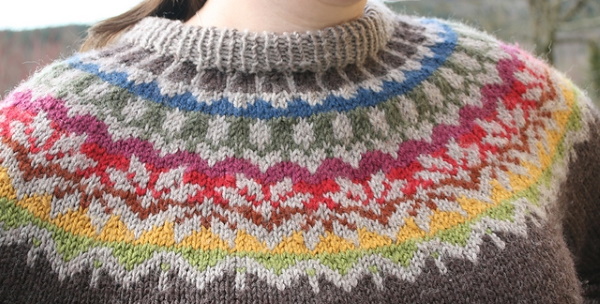
Modern needlewomen often deviate from the traditional technique of knitting lopapeysa. When making on a knitting machine, all the parts are knitted separately and then sewn together. Sometimes the product is knitted from top to bottom. However, it is worth noting that with this method the sleeve line will be more noticeable. When knitting from the top, you can choose any pattern. There is a special program that allows you to design a model for certain measurements and other parameters.
What threads are used for the traditional version?
Lopapeys are traditionally knitted from wool yarn of gray, white or black color. Modern needlewomen use any thread. Using a diagram with a description, you can knit complex patterns using yarn of any shade.
The sweater according to the pattern can be knitted from the following types of yarn:
- 100% wool;
- semi-woolen with the addition of synthetic or natural threads in different proportions;
- acrylic.
Selecting spokes
The number of knitting needles is determined by the thickness. This indicator should be 1 more than the thickness of the thread. For example, knitting needles No. 2 are suitable for yarn with a thickness of 1 mm.
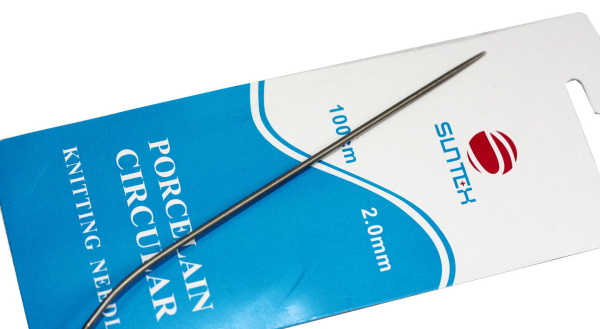
Since lopapeysa is knitted in a circle, knitting needles with fishing line are used to make it.
How to knit a classic lopapeysa sweater for women?
Knitting the product will not be difficult if you follow simple rules:
- Before you start working, you should think through the pattern carefully.
- All sizes are calculated as a percentage of the chest volume.
- The traditional method of making a lopapeysa involves knitting the fabric and sleeve separately. The parts are connected only in the armhole area.
- To correctly design the yoke, you need to perform 3 rows of decreases, hiding them in the curls of the ornament.
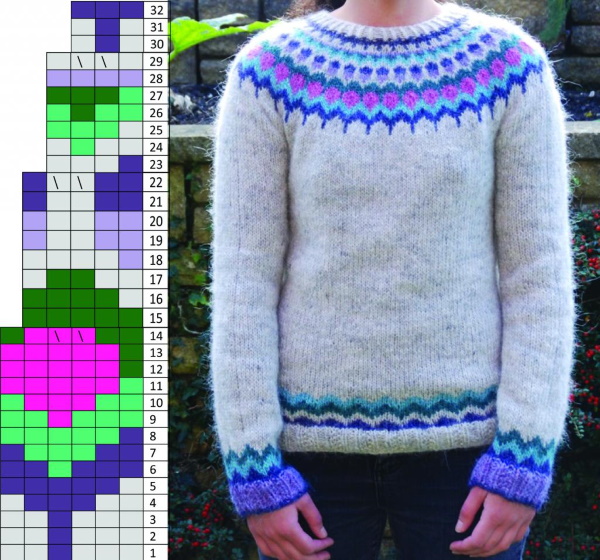
In most cases, the distance from the armpits to the neck is equal to ¼ of the chest circumference. It follows that the depth of the yoke should be divided into 3 parts. Knit the first part without decreases. Then comes a row of decreases, which is performed as follows: 2 persons., 2 sts together, 2 persons. The second decrease is performed at a height of 2/3 or ¾ from the beginning of the ornament. In this row, you need to decrease 33% of the total number of loops using the method: 1 persons., 2 sts together, and so on.
Make the last decrease when there are a few centimeters left to the neck using the following method: 1 knit, 2 sts together 2 times. It is convenient to make decreases in this way if the pattern goes in horizontal stripes, placing rows with decreases between them. Finish knitting the sweater by making several rows of elastic and closing the loops. The traditional lopapeysa is knitted without a neck. But if you want to add one to the product, you just need to knit the elastic to the desired height.
Simple stripe patterns are of little interest to anyone, so most yoke patterns have patterns in the form of segments, which are more difficult to knit. First of all, it is necessary to determine the size of the segment. To calculate, visualize the yoke in the form of a cone and divide it into equal sectors. Divide the total number of base loops to determine their number at the beginning.
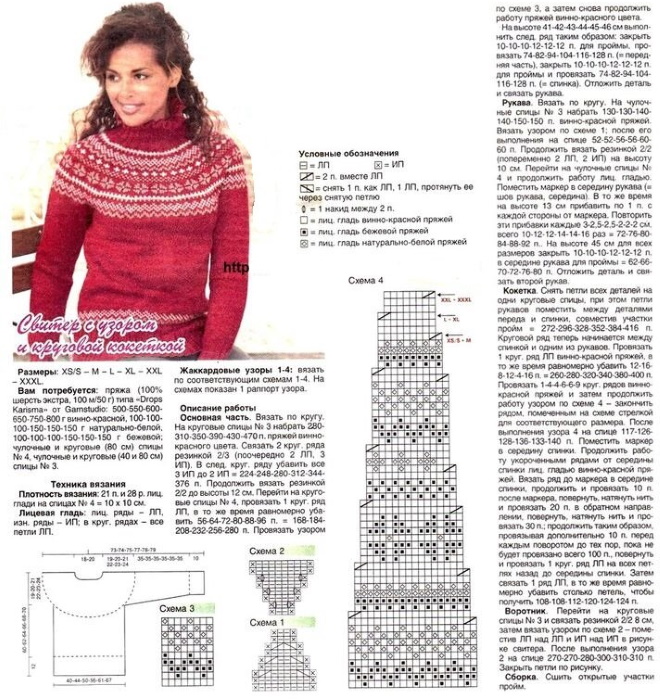
Carry out similar calculations at the neck. For example: the yoke has 16 sectors of 17 sts each. A total of 272 sts. At the neck, each segment has 5 sts. Thus, 16 x 5 = 80 sts, which is approximately 30% of the total number of loops. Following these calculations, it turns out that in this case, an ornament is needed that begins with st 17 and ends with st 5. The pattern can be found on the Internet, in knitting magazines, or developed independently.
Pattern diagrams
Lopapeysa (knitting patterns with descriptions of patterns can be repeated even by beginners) is decorated with individual elements of complex ornaments and alternates them, or a simple horizontal pattern is chosen. A product in which the pattern is made with yarn of different colors turns out very beautiful. The ornament is the "calling card" of the product, making it elegant and unique.
However, the pattern is the most difficult part of the sweater. Therefore, before starting to knit the product, select the ornament and study its pattern. Patterns with geometric figures in the jacquard technique are most often used, and they are also complemented with graphic images of plants. Sweaters for children are often decorated with drawings of animals. Needlewomen look for patterns for lopapeys in magazines, on the Internet, or design them in a special program.
Sprout in diagrams
Before looking at the patterns, it is necessary to understand what a sprout is. This term means the difference in the height of the neck on the back and chest panels. There should be more in the first row, otherwise there will be discomfort during wearing.
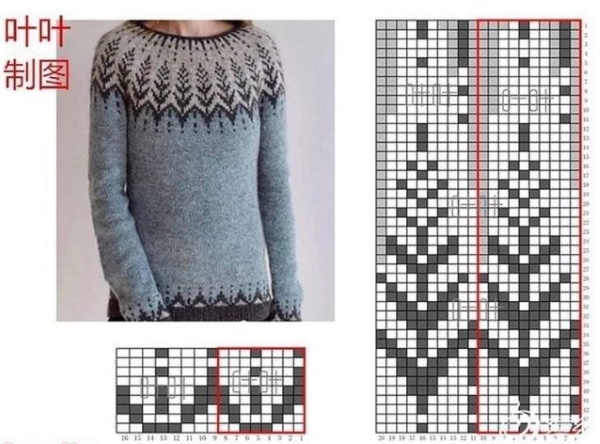
In traditional lopapeys, the sprout is often not knitted, so in the photos of the models you can see that the product rests against the throat. However, with perfect posture, this is almost unnoticeable. But most people do not keep their back perfectly straight when walking, so you need to add a sprout to the back pattern. Ideally, this should be done in rows without reductions.
Knitting density
Before you start knitting a product, you need to determine the density of the fabric. For this purpose, knit samples from the selected yarn, wash and steam. After that, calculate the number of loops per centimeter. For example, 1 sq. cm. includes 3 rows and 2 sts.
Knitting from the neck down
Lopapeysa (knitting patterns with descriptions can be traditional, which imply knitting from the bottom, as well as options from the neck) in the second case is knitted as follows:
- Calculate the number of loops according to the principle of knitting a traditional raglan.
- Choose simple patterns, approximately 6 rows high.
- Connect the collected loops into a circle, start and finish knitting 1 ornament.
- In the next row, cast on stitches, determining their number using the following formula: number of sts = number of rows of the pattern (multiple of 2) x 8. When knitting a raglan, add stitches every other row. For example, for a pattern consisting of 6 rows, you need to evenly add 24 stitches. To do this, divide the total number of stitches by 24. The result is the number of sts through which you need to make an increase.
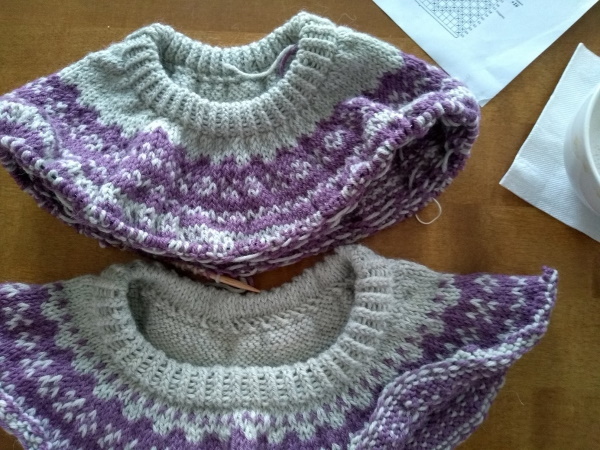
- Count the stitches. Determine what number it can be divided into without a remainder. Taking into account the resulting number, choose a pattern and knit according to the diagram until the desired yoke size.
- After knitting the yoke, distribute the stitches over all the parts of the garment. As an example, you can use the formula for calculating the raglan: total number of sts/3 = front = back, for sleeves 1/3 of the total number of sts (multiple of 2).
Other knitted Icelandic sweater variations
Lopapeysa has undergone more than one transformation during its existence.
The most popular options are:
- Product with a hood.
- Model in the form of a sweater with a zipper or fastener.
- In the form of a sleeveless jacket.
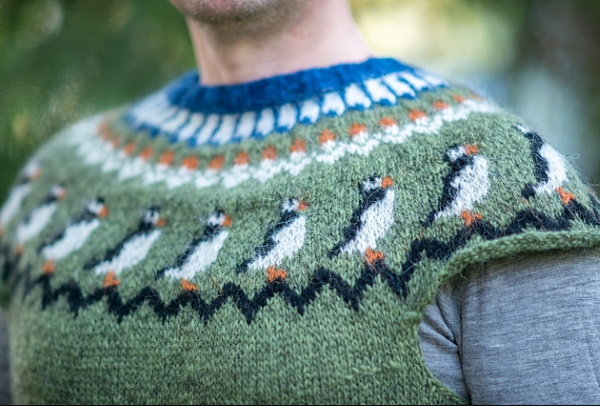
Knitting the hood begins with the last decrease on the neck. It is often done on sweaters. When knitting a model with a zipper, the work must be divided in the center and tied along the edge with an elastic band 2-3 cm high. It is worth noting that both parts must be made symmetrical. For a model with buttons, one is made larger than the other. In this case, do not forget to knit the loops on the bar.
When knitting a sleeveless jacket, work from top to bottom. After completing the yoke, close the loops for the sleeves or knit them with a rib. Make the body as usual.
Beautiful models of patterned sweaters with knitting needles. Schemes, description
The lopapeysa sweater is the most popular item of clothing in Iceland. The model looks impressive and stylish not only on women. There are many models for men and children. Such products look equally beautiful and stylish, regardless of age.
For men
Men's lopapeysa models are no less in demand. Below is a description, following which even a novice needlewoman can knit a sweater.
Materials needed for size S [M:L:XL]:
| Materials | Quantity |
| Brown wool yarn (100 m/50 g) | 400 (400, 450, 450) g |
| Yellow and green yarn | 100 g each |
| Turquoise and orange yarn | 50 g each |
| Sets of double pointed and circular knitting needles | No. 3.5 and No. 4.5 |
| Markers | 10 pcs. |
The sweater is knitted in a circle with the stocking stitch. The cuffs of the sleeves and the bottom of the product are 2x2 elastic.
Increments with a slope:
- Left (M1L). Insert the left knitting needle under the yarn over between the loops and knit through the back wall.
- Right (M1R). Do the same, only knit through the front wall.
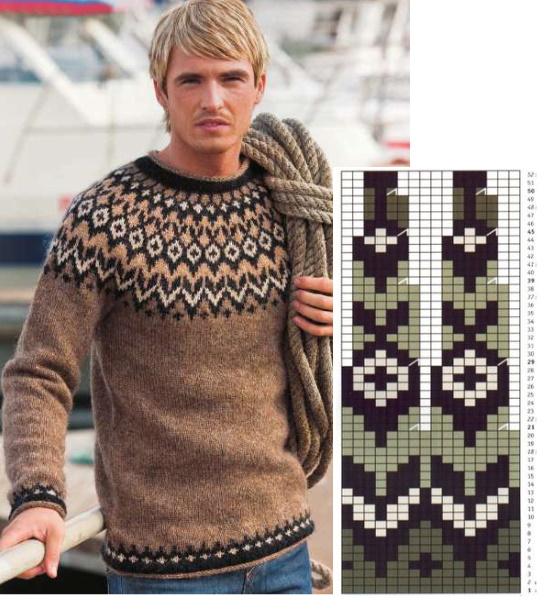
Step by step instructions:
- Back and front. Using circular knitting needles № 3.5 cast on 168 (176; 184; 192) sts with the main color yarn. Close in a circle, mark the beginning and end of the row with markers. Knit 14 rows with a 2x2 rib pattern. Then knit in circular rows with the front surface until the pattern. Transfer the loops to circular knitting needles № 4.5. Knit the pattern. Then knit with brown yarn until the height of 43 (44; 44; 45) cm from the cast-on edge. Set the knitting aside.
- Sleeves. Cast on 40 (44;44;48) stitches with brown thread on 3.5 mm knitting needles. Join in a circle, mark the beginning and end of the row with a marker. Knit 14 rows with a 2x2 rib pattern. Continue in a circle with the front surface. Remove the stitches to 4.5 mm knitting needles. Knit the pattern. Continue knitting with the main shade of thread. Knit a row, making increases: 1 front st, M1L, front st to 1 st before the marker, M1R, 1 front st. In total, 2 stitches have been added. Increase in row 6 (7;7;7) 4 (7;13;2) times, and 9 (5;-;10) times in row 7 (8;8; 8;). You should get 68 (70;72;74) stitches, respectively. Continue knitting until the height is 50 (51; 52; 53) cm from the cast-on edge. Transfer the first and last 5 (5; 6; 6) loops to a pin to form the armpit. A total of 10 (10; 12; 12) sts. Put aside the remaining 58 (60; 60; 62) loops of the sleeve.
- Yoke. Gather all the pieces on circular needles No. 4.5. Continue knitting with brown thread, taking into account the size:
- S and L. Slip the first 5 (-;6;-) front/back stitches onto a pin. Knit 74 (-;80;-) front stitches. Slip 10 (-;12;-) sts onto a pin. Next, knit 58 (-;60;-) front stitches of the first sleeve, 74 (-;80;-) front/back stitches. Slip 5 (-;6;-) sts onto a pin. Knit 58 (-;60;-) sts of the second sleeve. You should have 264 (-;280;-) sts in total.
- M and XL. Slip the first 5 (-;6;-) sts from front/back onto a pin. Repeat the following order: -(24;-;26) knit sts front/back, k2 together twice. Knit 24 (-;26;-) knit sts back/front. Slip the next -(10;-;12) sts front/back onto a pin. Knit -(60;-;62) sts of the first sleeve. Then repeat the following order twice: -(24;-;26) knit sts front/back, k2 together. Knit -(24;-;26) knit sts front/back. Slip the next -(5;-;6) sts front/back onto a pin. Knit -(60:-:62) sts of the second sleeve. In total you should get -(272;-;288) sts.
- For all sizes. Knit 1-45 (46;48;49) pattern, decreasing stitches until 99 (102;105;108) stitches remain. Form the neck. Then knit only with brown thread.
- S, M and XL. Decrease row: * knit 1, k2tog, k1, k2tog 2 (12;-;6) times, repeat from * 8 (1;-;3) more times. Total 72 (76;-;80) stitches.
- Size L. Row with decreases: knit 1, then knit 2 together, knit 2 repeat 9 times, knit 2 together, knit 10 times, knit 2 together, knit 2 repeat 9 times, knit 2 together. Total -(-:76:) loops.
Remove the stitches onto knitting needles No. 3.5. Knit 14 rows with a 2x2 elastic band. Close the stitches in any way. Sew the underarm stitches.
For children
Lopapeysa (knitting patterns with descriptions of models for children are presented further in the article) is knitted on stocking and circular needles No. 3.5 and 4. The yarn composition should consist of 100% wool. You will need 4 different shades. The master class is presented on knitting a sweater for a 4-year-old child.

Step-by-step instructions for knitting a children's lopapeysa sweater:
- Cast on 128 sts on circular needles No. 3.5 with the main shade yarn, close in a circle and knit 3 cm with a rib pattern.
- Transfer st to knitting needles No. 4 and knit 26 cm.
- Without knitting the outer 5 sts, put the work aside and start knitting the sleeves.
- Cast on 32 sts on 3.5 mm double pointed needles using the main shade yarn.
- Knit in the round with a 3 cm rib pattern. Add 2 sts in the outer row.
- Change to 4 mm needles and knit in stocking stitch. Add 4 sts in row 1.
- Knit, adding 1 st in every 6 rows behind 1 and before the last st. Repeat the process until 50 sts remain.
- Continue knitting without increasing, 28.
- Slip 9 sts onto a pin. 41 sts remaining.
- Knit the second sleeve in the same way.
- Connect all the parts.
- Remove the last 5 sts and the first 4 sts of the main fabric from the pin onto circular knitting needles No. 4 in order to shape the armhole.
- Knit 41 sts of the sleeve. Then knit 55 sts of the front, and remove 9 sts to a pin to shape the armhole.
- Knit 41 sts. 2 sleeves.
- Knit 55 sts for the back.
- You should get 192 sts.
- Knit the pattern, gradually decreasing sts until 72 sts remain on the needles.
- Change to 3.5 mm needles and knit with the main shade yarn. Decrease 8 sts evenly. 64 sts will remain.
- Knit 3 cm with 2x2 elastic.
- Close the loops in any way.
- Connect the armhole loops. Sew the undercut loops.

The finished product must be hand washed at 40 C. In this case, it is worth following the recommendations of the yarn manufacturer. The product must be rinsed with the addition of conditioner. The lopapeysa should be dried horizontally.
You can create your own knitting patterns or choose ready-made ones. Following the instructions for making a sweater with a description, even a novice needlewoman can create a stylish and beautiful product. For women's and children's models, it is recommended to use bright, rich colors in patterns, and in lopapeysa models for men - neutral and dark.
Video about knitting pattern Lopapeysa
How to knit a Lopapeysa sweater:

Thank you. Everything is laid out on the shelves.